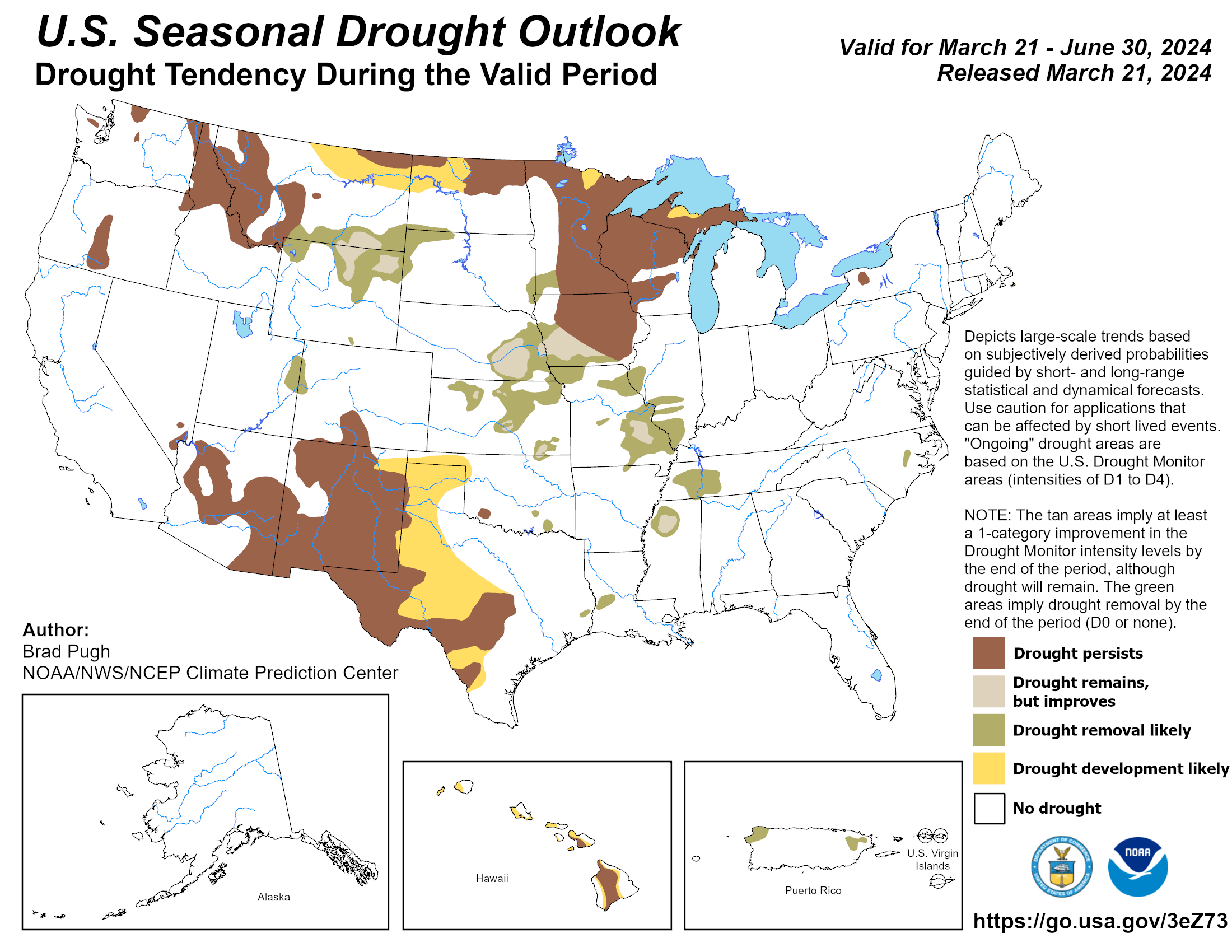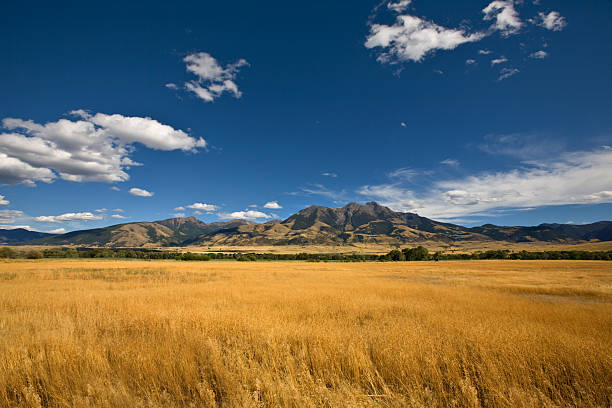Spring Outlook: Warmer for most of U.S., wetter in the Southeast
Posted
Last Updated
By noaa.gov.

Spring Outlook for drought, temperature and precipitation
For April through June, above-average temperatures are likely to persist across much of the U.S. The greatest chance for above-average temperatures is in the Great Lakes region, the Pacific Northwest and Northwest Alaska, though most of the continental U.S. and Alaska have elevated odds of above-average temperatures.
Precipitation is slightly favored to be above average in portions of the central Plains, the southeastern U.S. and in southern Alaska. Parts of the Pacific Northwest and Southwest, meanwhile, are most likely to see precipitation below the seasonal average.
Moderate to exceptional drought conditions currently exist across less than 20% of the U.S. and Puerto Rico, a marked improvement from last year, as El Nino-fueled rain fell this winter across the Gulf Coast region. Drought conditions are likely to continue improving in the southeastern U.S.; however, the drought is likely to persist or even expand through portions of the Rocky Mountains and the Great Plains.

